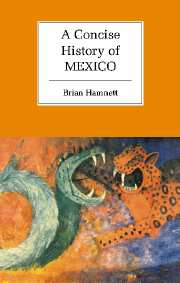Book contents
- Frontmatter
- Contents
- List of illustrations
- Preface
- 1 Mexico in perspective
- 2 The pre-Columbian era
- 3 The European incursion, 1519–1620
- 4 New Spain, 1620–1770: Spanish colonialism and American society
- 5 Destabilisation and fragmentation, 1770–1867
- 6 Reconstruction, 1867–1940
- 7 The monopoly party, 1940–2000
- Final comments
- Bibliography
- Index
6 - Reconstruction, 1867–1940
Published online by Cambridge University Press: 05 June 2012
- Frontmatter
- Contents
- List of illustrations
- Preface
- 1 Mexico in perspective
- 2 The pre-Columbian era
- 3 The European incursion, 1519–1620
- 4 New Spain, 1620–1770: Spanish colonialism and American society
- 5 Destabilisation and fragmentation, 1770–1867
- 6 Reconstruction, 1867–1940
- 7 The monopoly party, 1940–2000
- Final comments
- Bibliography
- Index
Summary
Several decades ago, US economist Clark Reynolds argued for three periods of rapid economic growth in modern Mexico: 1770–1795; 1880–1907; 1946–1970. In the first of these, capital was generated within the economy of New Spain and investment was made primarily by Spanish peninsular merchant-financiers resident in Mexico. During the second period, foreign investment played a decisive role in stimulating growth, particularly in the export sector. The final period was, as we shall see in the following chapter, the product of a post-revolutionary political economy, in which the Mexican state fulfilled an enhanced role. From the 1880s, the Mexican economy (and the Latin American economies, in general) became more closely integrated into the international system in which the principal dynamic lay in the industrialised and rapidly industrialising countries of Northern Europe and the United States. The demand for industrial raw materials and tropical produce provided powerful incentives to overseas investment. Accordingly, the recipient countries were faced with the urgent necessity of bringing their inadequate infrastructure up to date by modernising their port, transportation, and banking facilities. These pressures, in turn, pointed to the necessity of political stabilisation at home.
The aftermath of the Reform era shaped the economic structure of late nineteenth- and early twentieth-century Mexico. Although considerable industrial advance took place in the years from 1880 to 1910, Mexico by 1940 still remained predominantly rural.
- Type
- Chapter
- Information
- A Concise History of Mexico , pp. 177 - 248Publisher: Cambridge University PressPrint publication year: 1999

